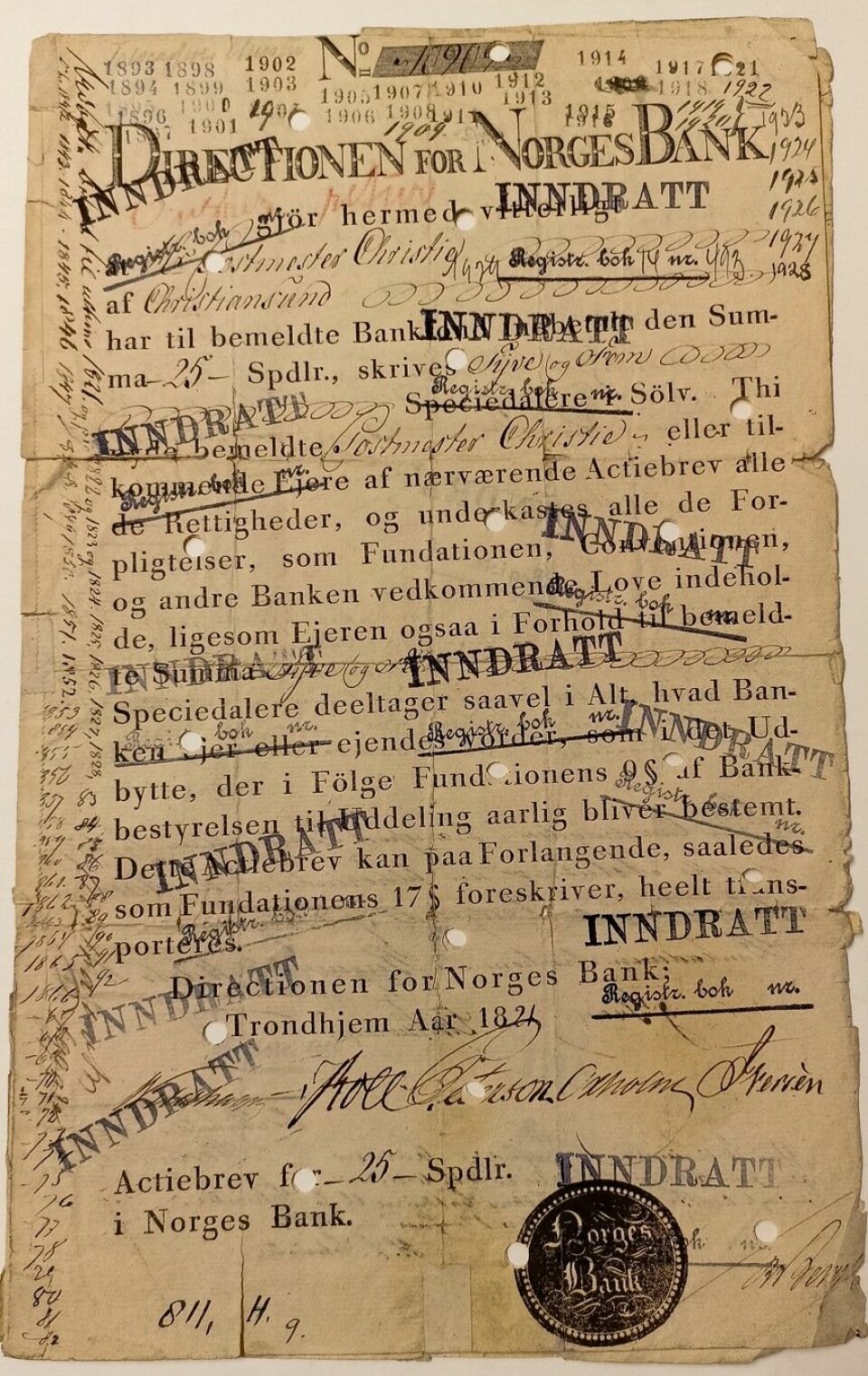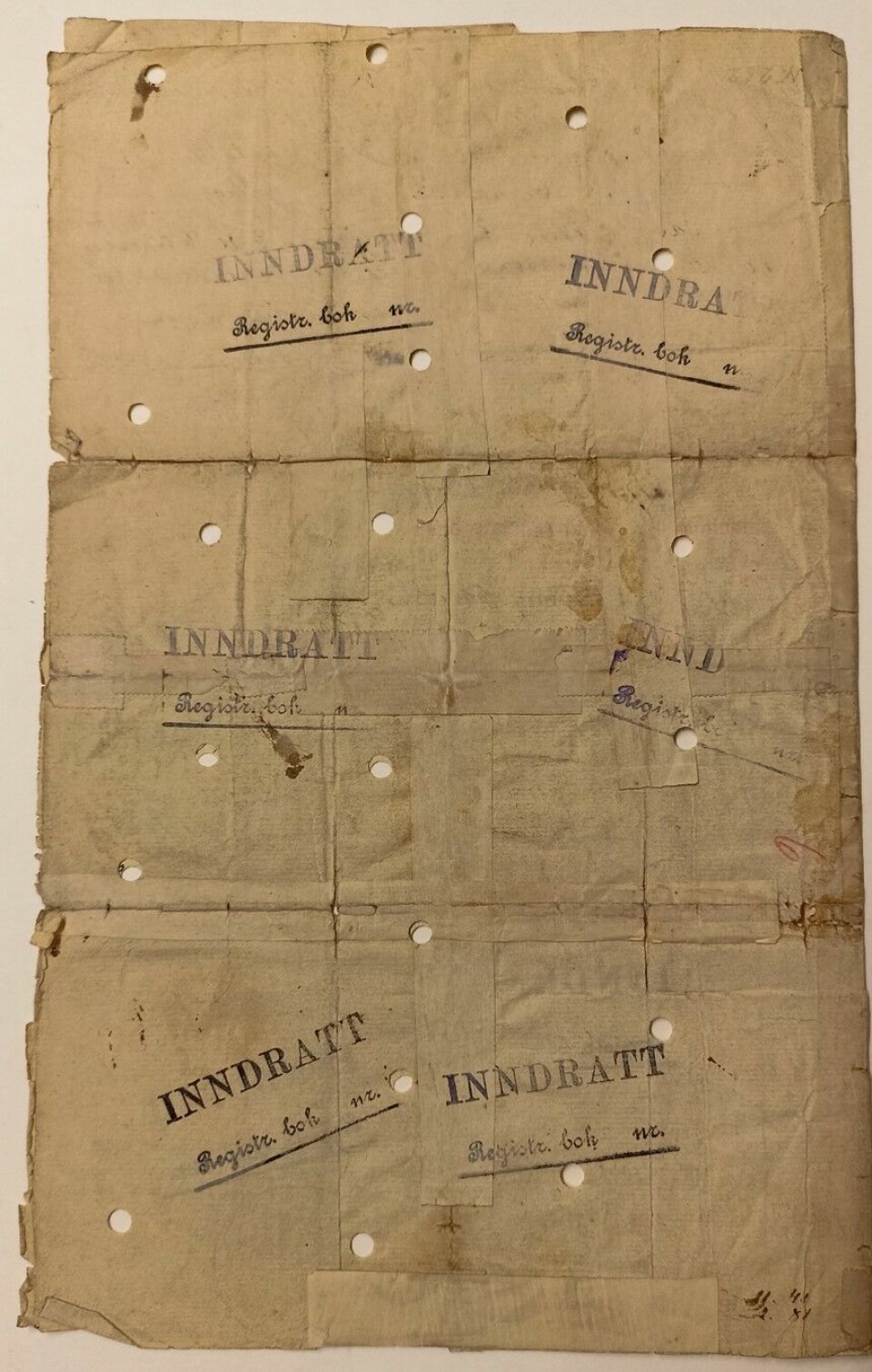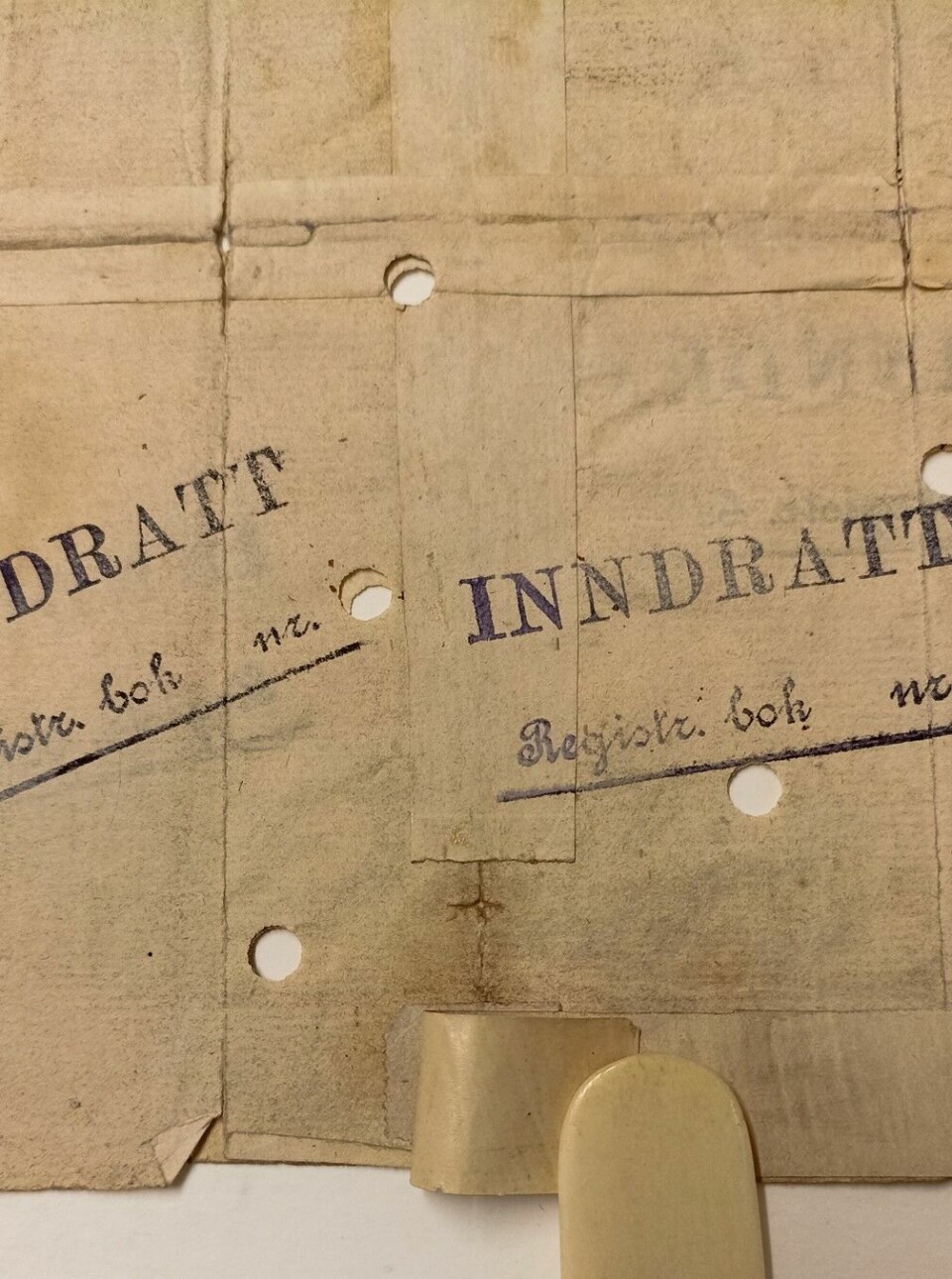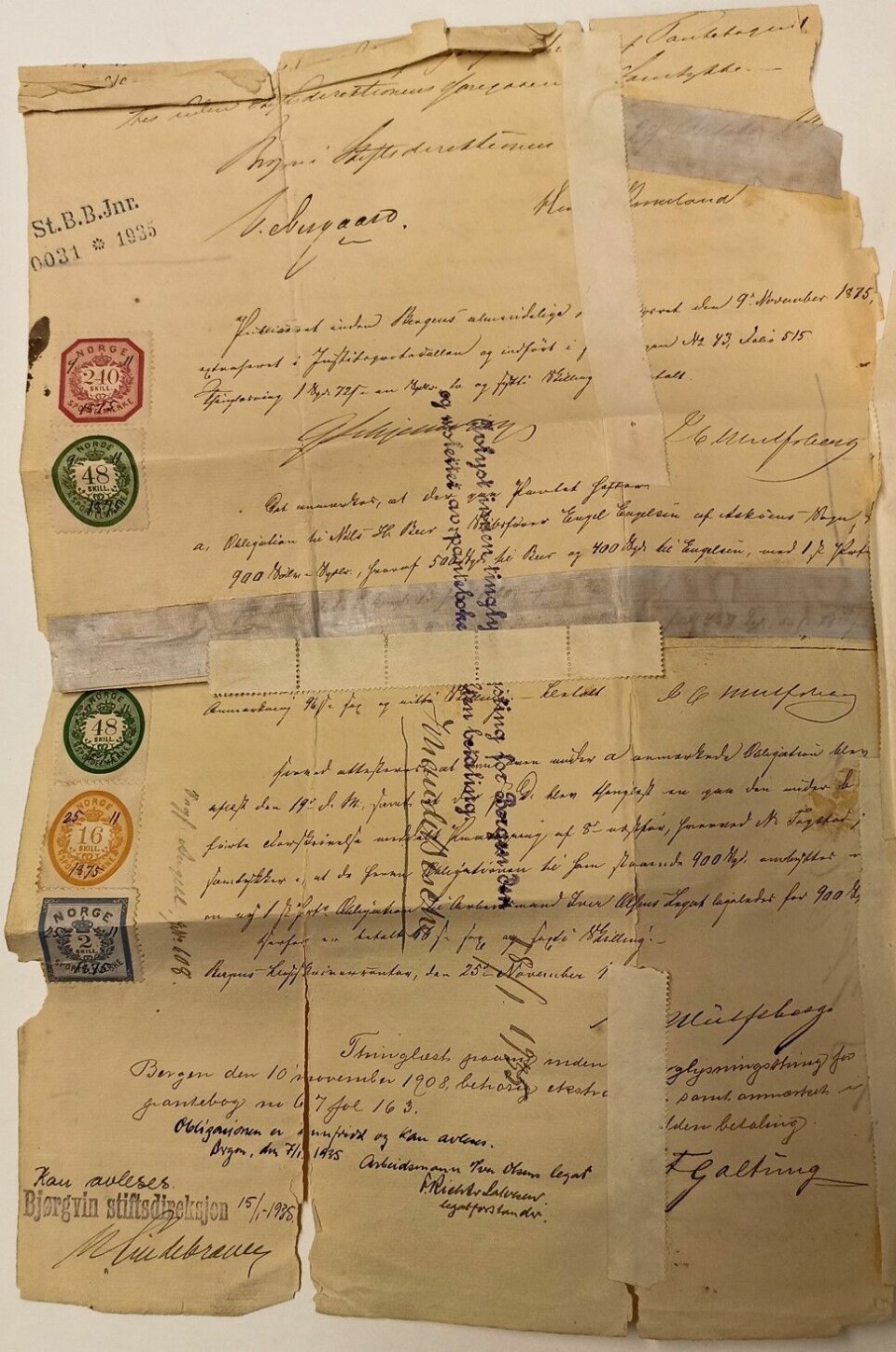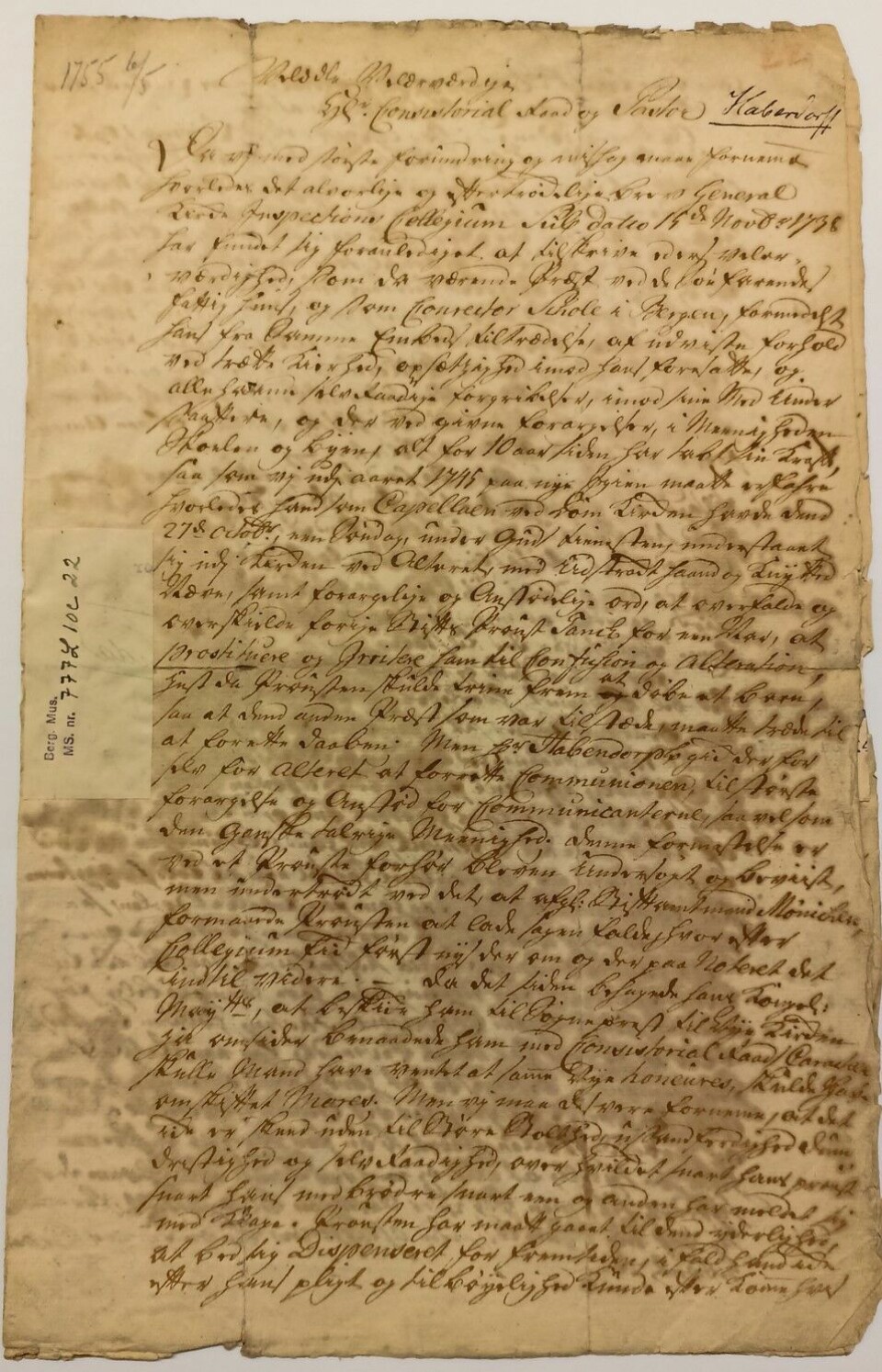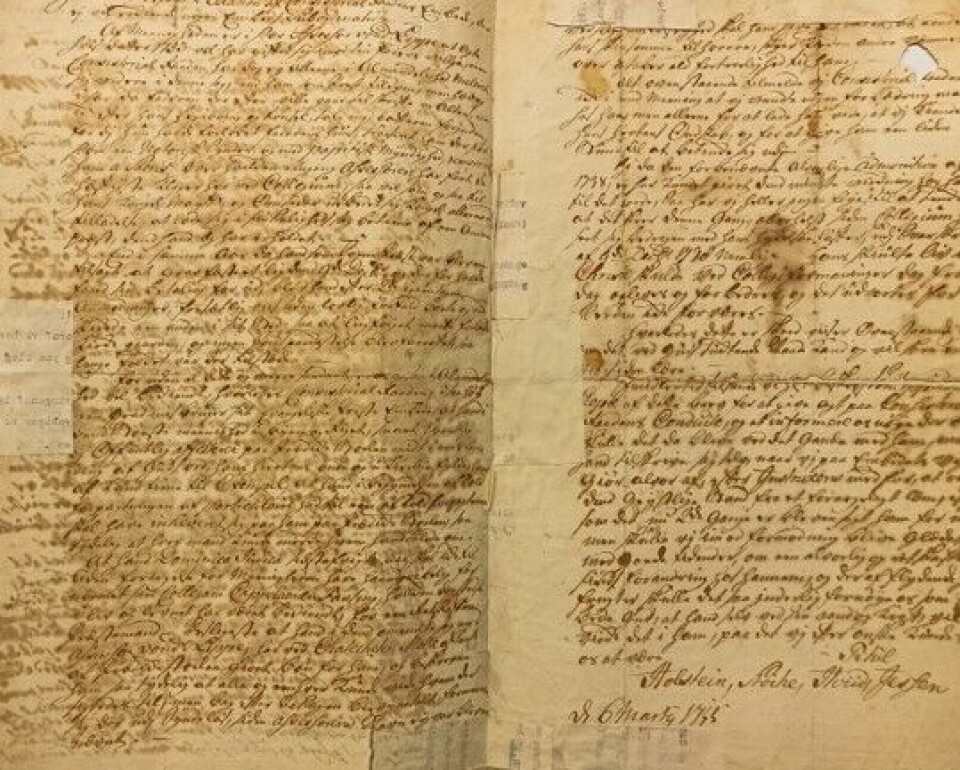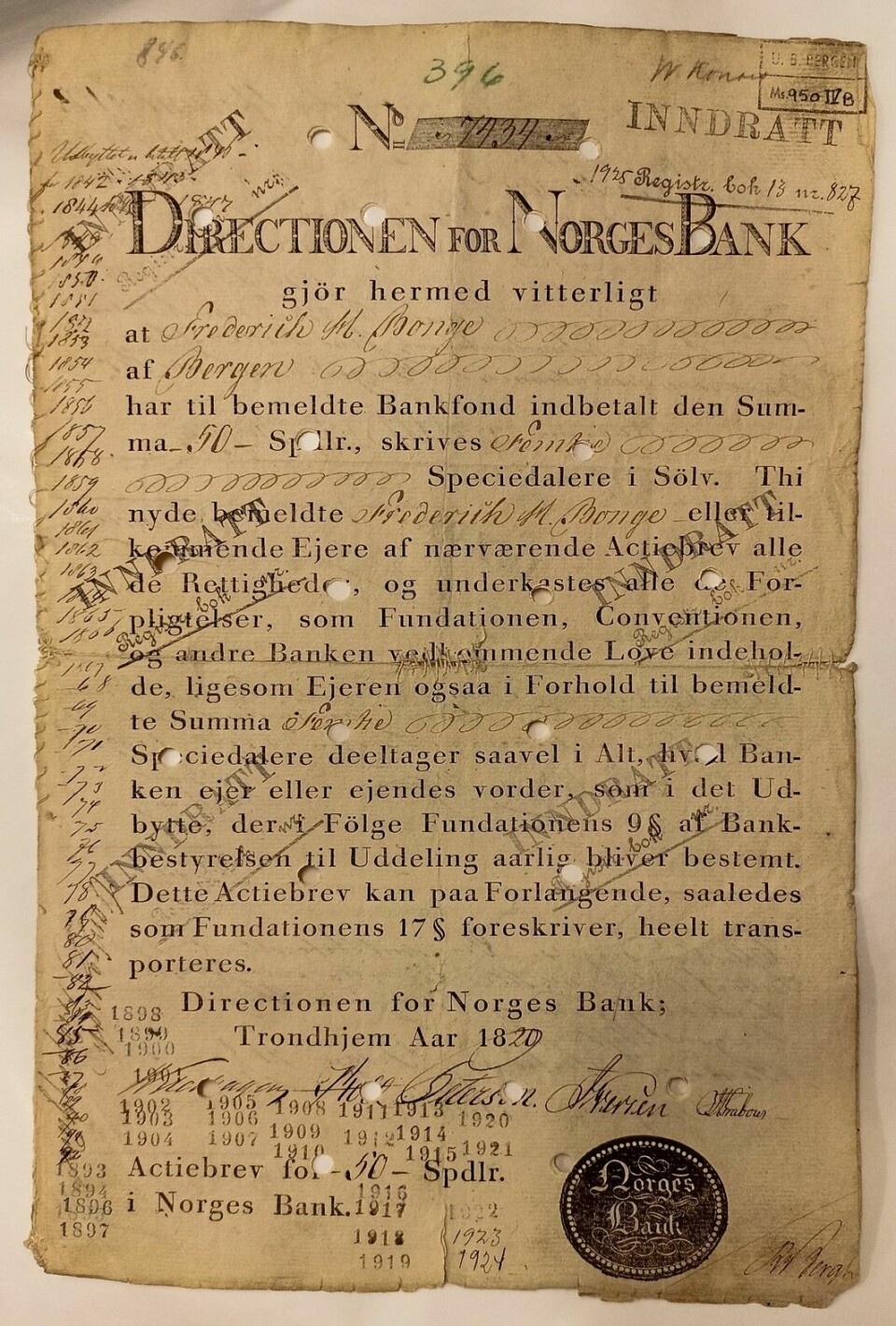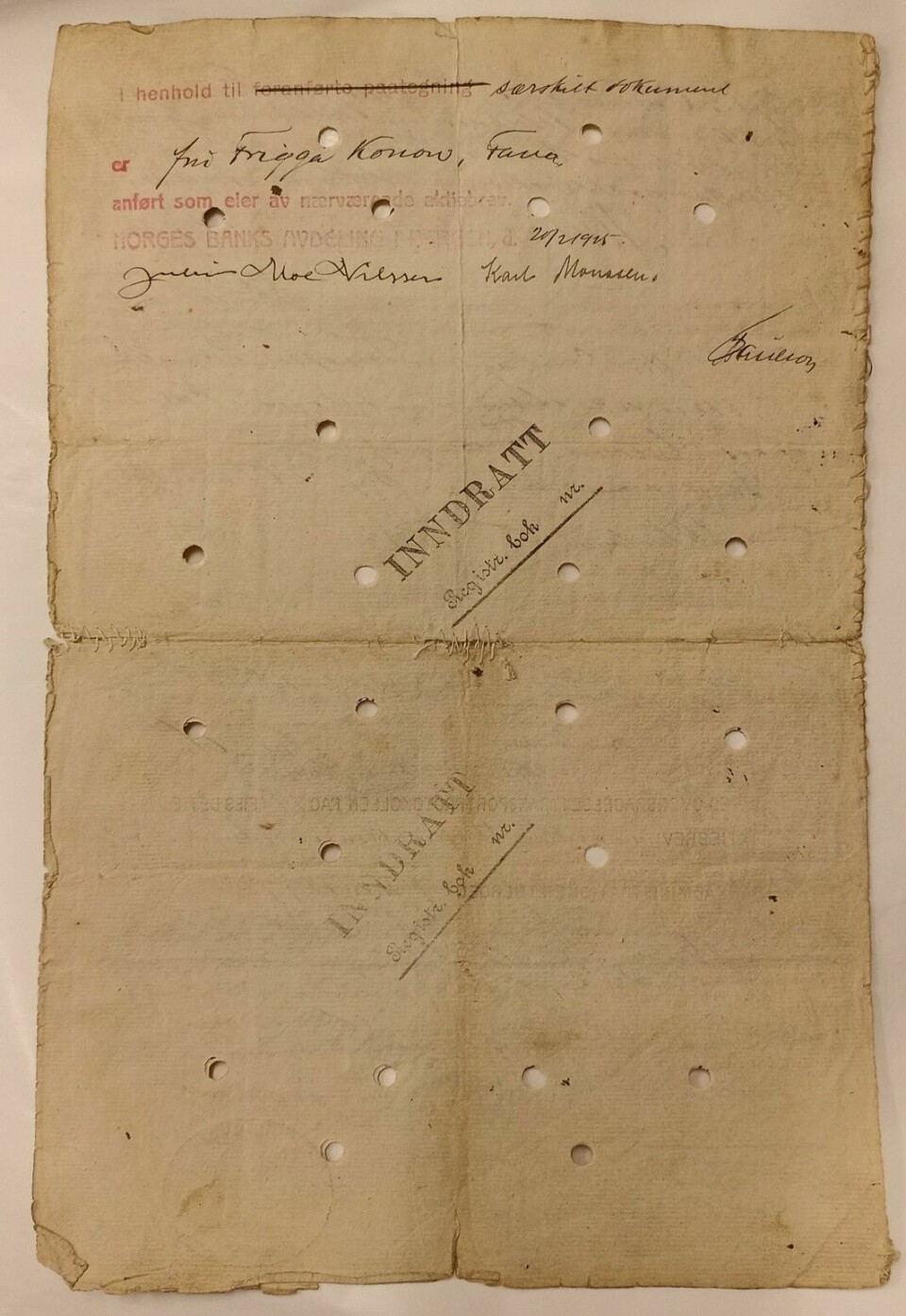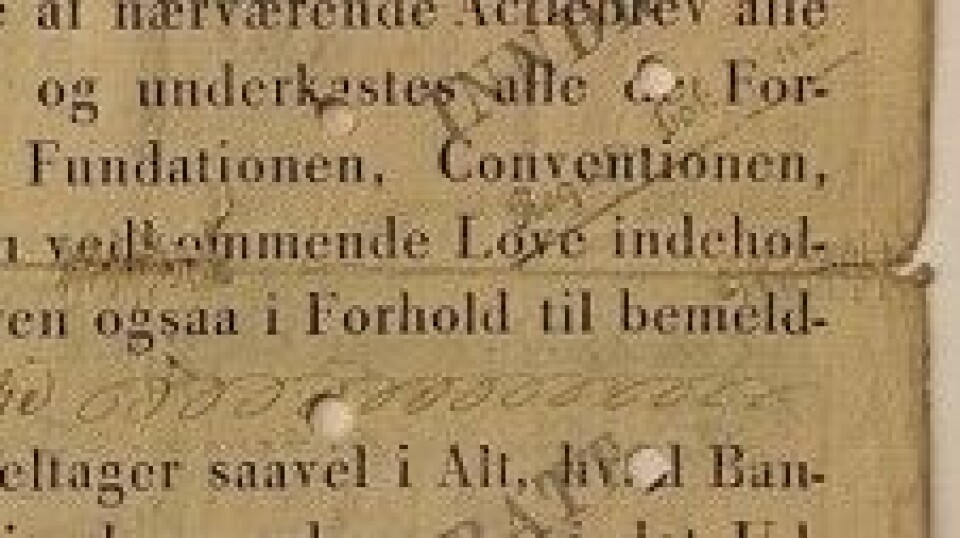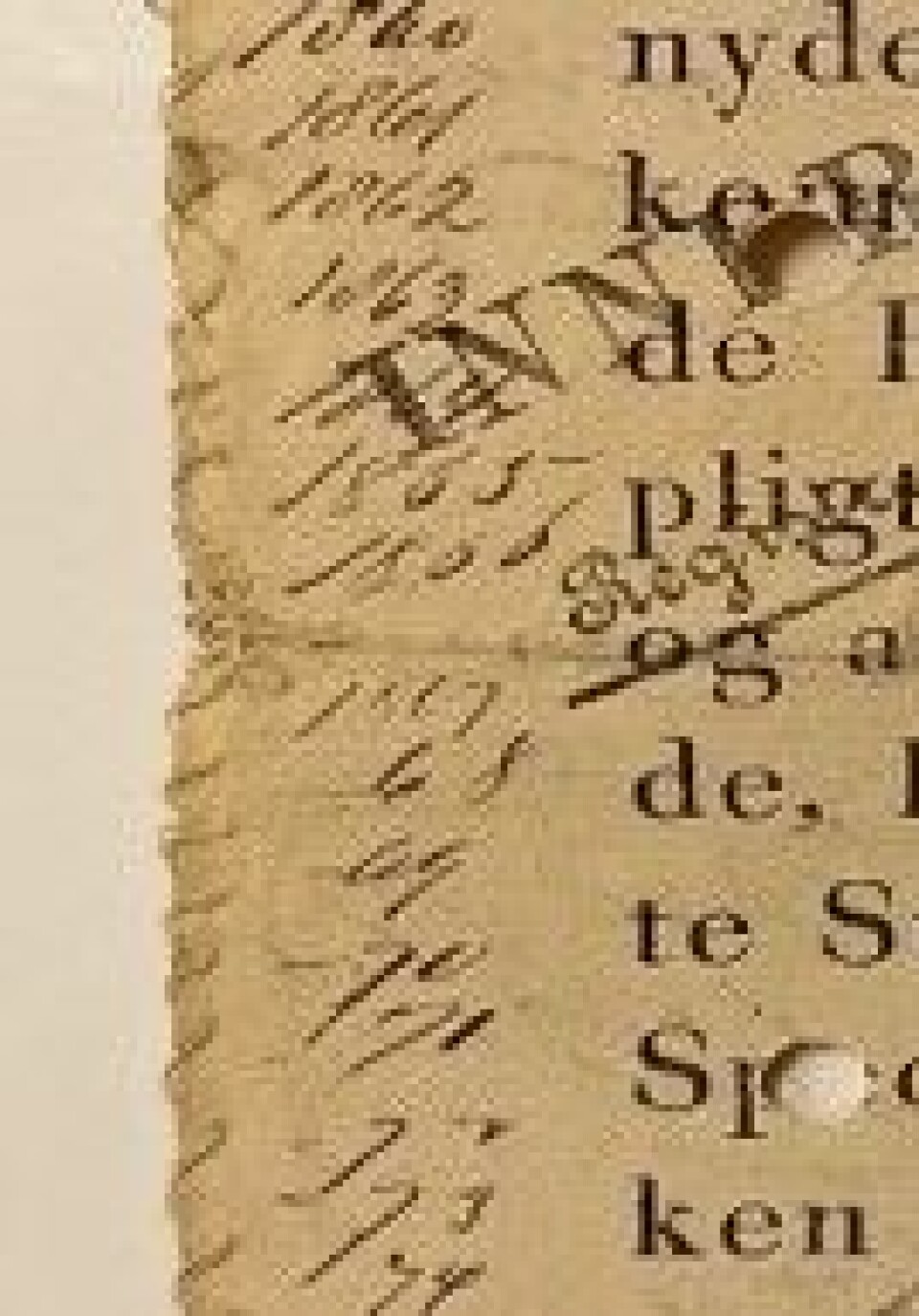SPESIALGLIMT
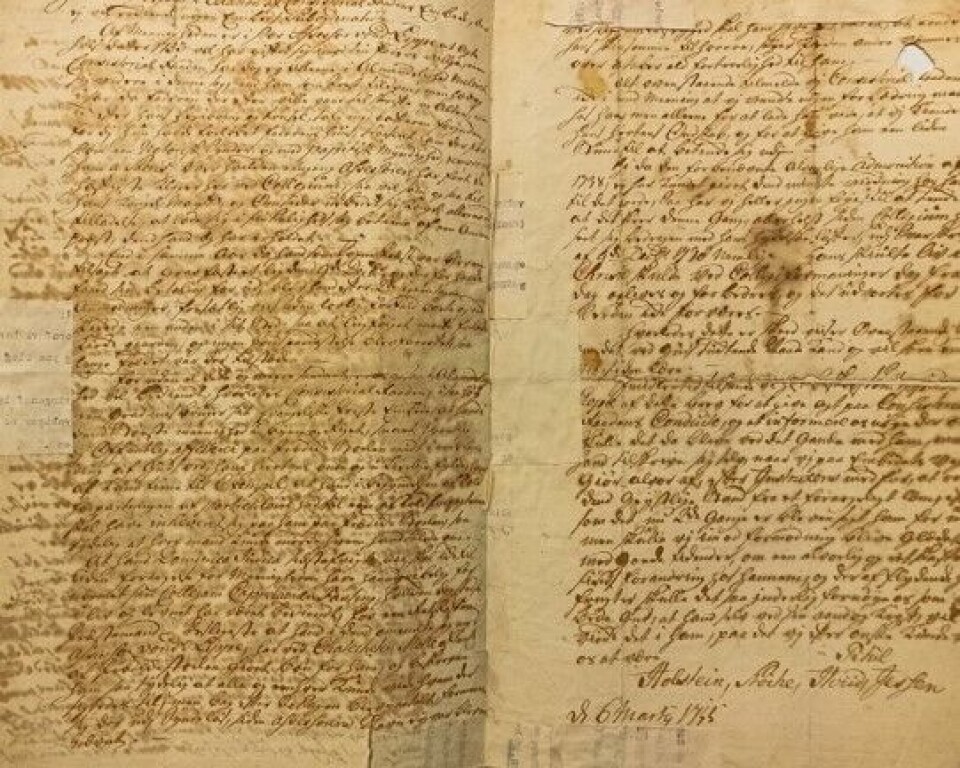
How was paper repaired?
The UiB special collections archives exhibit an array of paper repair techniques that were carried out using materials close at hand, during the nineteenth and twentieth centuries.
Paper is a durable material that can withstand wear and has been the most widespread writing and printing support for thousands of years. However, when single documents are heavily used or misused, the typical deterioration of the substrate could result in tears, splitting, breaks, and losses of the surface.
When damage occurred to the outer edges and margins of the documents it was common to trim the edges. However, when damage occurred to the text and along the fold lines of the documents, simple techniques such as patching or sewing were employed. Patching was carried out by gluing plain or printed paper waste to the weakened areas. Sewn paper repairs stem from an earlier technique of covering and consolidating holes and tears in parchment and animal skin. By the mid-twentieth century, adhesive tapes were introduced to the market and were extensively used as a convenient way to fix any type of deterioration. Unfortunately, tape repairs accelerate the degradation of the paper and can cause severe damage and staining to the paper fibres.
Here follow some examples:
MS 0811.H9 Universitetet i Bergen, Universitetsbibliotekets spesialsamlinger
The unprinted perforated scraps, possibly from sheets of postage stamps, as well as strips of plain paper, were used to reinforce the weak and damaged areas.
MS 0912 Universitetet i Bergen, Universitetsbibliotekets spesialsamlinger Layers of previous repairs include an adhesive tape that obscures part of the text and has stained the paper fibres. Additional layers of perforated scraps were later adhered and are now partially detached.
MS 0777.L10c.22 Universitetet i Bergen, Universitetsbibliotekets spesialsamlinger Waste paper with typewritten text was selected to patch the weak and broken areas of the document.
MS 950.IV.B Universitetet i Bergen, Universitetsbibliotekets spesialsamlinger Plain stitching with sewing thread was used to secure the broken spine fold and to piece together the split fold lines.
Any type of previous repair in archival documents must be described and recorded as part of the conservator’s condition report and preservation decision-making. Although such repairs may appear crude and unpolished, they are an integral part of the history of each document. Regardless of any visible distortion to the surface of the paper resulting from previous repairs, it would be considered unethical to remove or replace them if there is no significant mechanical and chemical deterioration to the document.
Historical mending techniques reveal the practical and common-sense approach of earlier generations toward material culture that helps us better understand the way such documents were used, read, restored, and valued in their everyday life.
